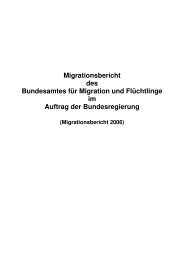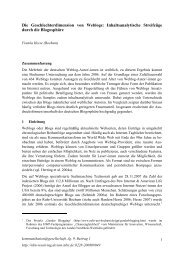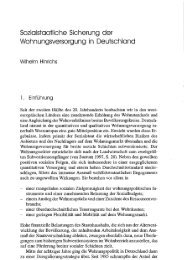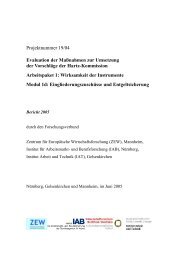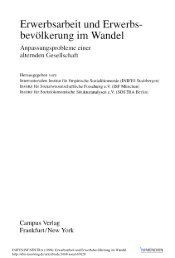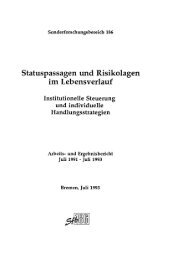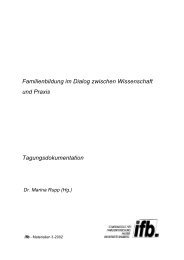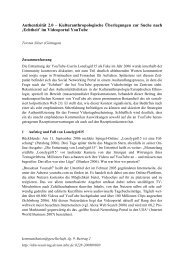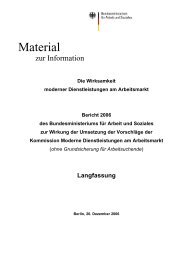Public Financial Management for PRSP - Deutsches Institut für ...
Public Financial Management for PRSP - Deutsches Institut für ...
Public Financial Management for PRSP - Deutsches Institut für ...
Create successful ePaper yourself
Turn your PDF publications into a flip-book with our unique Google optimized e-Paper software.
Stefan Leiderer et al.<br />
— Several health centres <strong>for</strong> the delivery of primary health services (maternal<br />
and child health, treatment of common diseases). Health centres<br />
are not separate cost centres but fall under the responsibility of district<br />
hospitals.<br />
As such, the Ministry of Health and Population (MoH) accounts <strong>for</strong> 64 % of<br />
the total number of <strong>for</strong>mal health facilities (Hanson 2005, 1). Beside the public<br />
health care providers and some private clinics, non-governmental organisations<br />
play an important role in providing health care services in Malawi.<br />
The most important among these is the Christian Health Association of Malawi<br />
(CHAM), which provides 26 % of health care facilities (Hanson<br />
2005, 1). 6<br />
The most prominent government strategy in the Malawian health sector is the<br />
Essential Healthcare Package (EHP), which is also incorporated in the<br />
M<strong>PRSP</strong>. The EHP consists of a bundle of health services that are supposedly<br />
available <strong>for</strong> every Malawian throughout the country. It is intended to improve<br />
the quality and availability of essential healthcare inputs, to improve<br />
the access to essential healthcare and to strengthen the administration and<br />
financing of essential healthcare services (Republic of Malawi 2002, 60).<br />
Implementation of the EHP programme, however, is difficult, not least due to<br />
the poor staffing situation in the sector.<br />
The health sector is extremely donor dependent, with donors providing<br />
around 60–75 % of total expenditure over the period from 2000/01 to<br />
2003/04 (Hanson 2005, 8). In October 2004 the government and a group of<br />
donors (DFID, NORAD, World Bank) launched a Sector Wide Approach<br />
(SWAp) <strong>for</strong> the health sector. The financing mechanism is viewed as an important<br />
instrument <strong>for</strong> implementing the EHP. Accordingly, the EHP Programme<br />
of Work provides an extensive list of activities that should be financed<br />
with SWAp resources (Republic of Malawi 2004). Although at the<br />
time of research, the SWAp was still in its very early stages, most stakeholders<br />
expected substantial improvements regarding the alignment of donor<br />
procedures to the Malawian budget cycle and donor coordination in general,<br />
6 CHAM coordinates health units from different church denominations, including hospitals,<br />
health centres, and dispensaries. Together, these units provide roughly one third of health<br />
services in Malawi. CHAM receives funds from government, churches and private donations.<br />
In addition, it charges user fees <strong>for</strong> health services.<br />
52 German Development <strong>Institut</strong>e




